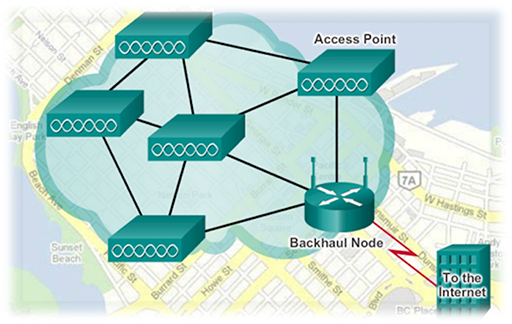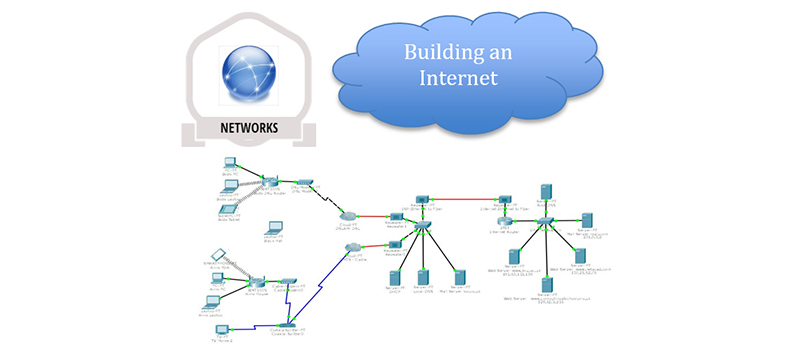6 Municipal WiFi
- Many cities (such as London) have begun setting up municipal WiFi networks utilising the same range technology that is used within homes. Most of these networks are provided to allow the emergency services to access data services when attending an incident, but often allow residents to access the network for Internet connectivity too.

Figure 8
- Most municipal wireless networks utilise a mesh topology, as shown in the figure above. In this topology the access points are all interconnected wirelessly and several access points provide coverage for the same area. The use of a wireless mesh reduces the amount of cabling required to implement it and the overlapping coverage is able to maintain service even if several access points fail.
- Note that the access points connect to a wired router (backhaul node), which provides connectivity to a service provider for Internet access.
- Because subscribers to municipal WiFi are connecting to access points that may be located quite a distance from their home, they require WiFi modems with improved receivers and directional antenna to optimise the weak signal that they receive.
- Some UK based ISPs offer a form of municipal WiFi by allowing their customers to access the Internet by connecting to other subscriber’s home routers via WiFi wherever they happen to be in the UK.
Back to previous pagePrevious
5 Wireless
